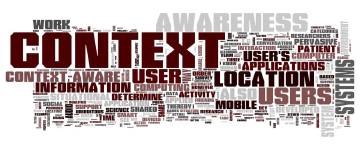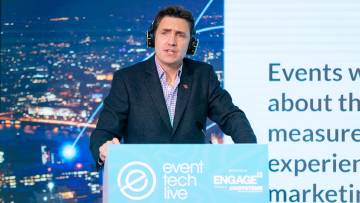The Truth About Location And Proximity

The Truth About Location and Proximity
Beacons have a place, but it’s not where you might think.
There’s been a lot of questionable commentary recently on the hot topic of beacons, proximity, and location. Some of it downright misleading.
Here are some myths that appear to have become received wisdom in various quarters:
- Location doesn’t work indoors – you need proximity.
- Location gives a broad picture, but for accuracy you really need proximity.
- If GPS isn’t available, or isn’t accurate enough, the alternative is proximity.
- Beacons can reliably trigger notifications. ‘Geofences’ can’t.
These are all nonsense.
In order to understand why, I am going to set out very clearly what proximity means, what location means, why they’re different, and what they’re good for. And in doing so, I am going to be suggesting that beacon technology has some great use cases, but it’s probably not what you’re using them for.
Location. An absolute.
If we know someone’s location, we know where they are – their position. But it doesn’t necessarily have to involve GPS. It doesn’t have to be outdoors. And it isn’t necessarily inaccurate. Three myths busted already.
Location data of course often does come from mobile devices using GPS (along with WiFi and cell tower information). But equally, it could come from other location technologies – from using magnetometers to detect variation in the earth’s magnetic field to dead reckoning using accelerometers, to data encoded by light bulbs.
And beacons do have a role to play here. Beacons aren’t just for proximity – they can be a handy tool for establishing location indoors. It’s just that most beacon solutions on offer aren’t doing this. Instead, they’re squarely proximity solutions.
Proximity. Now that’s relative.
Proximity simply means being nearby or close. Proximity means we know two devices (say a phone and a beacon) are near each other. But we don’t know (and don’t care) where either is actually located. We just care if they’re close together or not.
Sometimes proximity really is what we want to know. A location is secondary, or irrelevant. Think about key or wallet alerts that notify you if you’ve left something behind. They don’t need any information on the whereabouts of either your phone or your wallet. They work simply on the distance between the two. No location. Just proximity. Shout out to Tile. Or VoyagerBlue.
Or think about a driver profiling app that starts automatically when you get in your car. The system isn’t bothered whether your car is at home, or at work. All it needs to know is if you, and your car, are in proximity or not. Shout out to Inzura.
Or think about lead trackers for events that sense that you are interacting socially with someone (in the real world, not social media!). They detect the proximity between two people, but it makes no difference where those two people are. Shout out to Hiver.
These are all cases where proximity is what’s of interest. Cases where we want to know if two devices are close to each other, and specifically want to know that fact wherever in the world, indoors or out, the devices happen to be located.
Muddled thinking
Now here’s where the confusion really starts. Most beacon use cases aren’t interested simply in proximity. They’re interested very much in location. If you want to trigger a push notification as someone walks past your store, or reaches a department inside it, it’s location that matters, not simply proximity.
The beacon industry has grown rapidly selling a proximity solution but using it to provide a very inaccurate proxy for location. The basis of this goes like this: If we know roughly where the beacon is, and we know you’re somewhere near the beacon, then we know very roughly where you are.
But if it’s location we’re interested in, then we can do a whole lot better than using proximity information to roughly estimate location.
If you’re after location, using beacon proximity really is a poor man’s solution. To get to the kind of location accuracy you’ll typically want, a very large (and costly) beacon infrastructure is often required. Indeed one beacon manufacturer refers to the ‘point or grid’ approach. I humbly suggest if you’re adopting a grid approach, proximity technology is letting you down.
It is, of course, possible to use beacons, along with other location methodologies, in a much more intelligent way. By combining signals from multiple beacons, you can generate real location data with far fewer beacons. And by combining beacon data with other techniques, even greater accuracy can be achieved. Shout out to indoor positioning companies like indoo.rs.
The important thing is to stop worrying whether your environment is indoors or outdoors, or whether you need high accuracy or low accuracy. The key is whether you need location data or proximity data.
Would you rather know that your customer is currently looking at the menu, or that they probably somewhere near a device that is probably somewhere near the menu? There’s a big difference between location data and proximity data.
And if you need to know where people are located, don’t use a proximity solution. To leverage beacons properly to generate location data you need to think way beyond places, triggers and visits. You need a platform that can process multiple signals from multiple beacons, combine that with other techniques, and turn that into real location data.
An eye to the future
Ultra-wide band is on the way in mobile phones. And the signals are capable of location to far greater accuracy than Bluetooth beacons. Ground-based GPS type technologies are coming too. New satellite location systems will be much better at working indoors.
Here’s a prediction. In five years’ time, Bluetooth beacons will still have a place. But it won’t be where you expect it. It will be on moving objects – vehicles, people, and wallets, where it really is proximity we’re interested in.
So, next time someone tries to sell you a proximity solution – for marketing or engagement or customer tracking or whatever else – ask yourself if you’re interested in where your customers are. Or whether two mobile devices are near each other.


